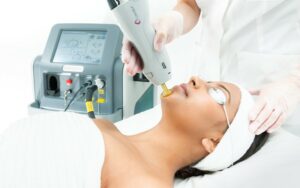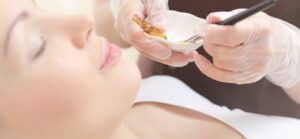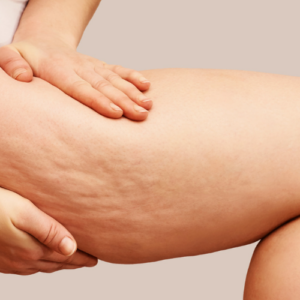
Cost, Procedures, Benefits and Potential Risks
There is a continuous loss of subcutaneous fat as the human body ages, which results in the formation of wrinkles. In addition to that, long term exposure to sun can also cause skin discoloration and development of fine lines. Eating healthily and keeping your body hydrated everyday can slow down aging effects. However, it cannot significantly reduce the physical signs of aging.
There are medicinal remedies and nonsurgical procedures that can help you stay “younger than your age.” Listed below are a few nonsurgical anti-aging skin treatments that can help you look refreshed, young and beautiful!
1. Laser Resurfacing Anti-aging Skin Treatments

Laser, also called light therapy is a form of anti aging treatment that uses light energy in repairing and regeneration of skin cells. It is a technique that directs sharp and concentrated vibrating rays of light at damaged skin removing the skin layer by layer. It’s a popular procedure, also referred to as laser peel, or laser vaporization.
Here are the reasons why you should choose laser anti aging skin treatments:
- There is no need for pain-killer medications after treatment.
- Increases the energy levels of cells in the area treated.
- It improves your immune system.
- Boosts collagen for the formation of new skin cells, revealing younger looking skin.
- Improves lymphatic drainage which also reduces swelling.
- It promotes better circulation of blood in the area of treatment.
Possible Risks Involved in Laser Skin Treatments
Like any other treatment, laser skin treatments have risks that come along with it. However, qualified ASDA and Health Canada approved dermatologists and certified medical aestheticians have ways of minimizing these risks.
These potential risks are:
- Swelling
- Instances of skin discoloration
- Pain
- Scarring
- Infection
- Crusting
The Cost of Laser Skin Treatments
The treatment cost varies depending on the types of lasers used. According to the report by the American Society of Plastic Surgeons (ASPS), non-ablative laser treatments has an approximate cost of $1,031 each session, the ablative therapies, on the other hand, costs up to $2,330 a session.
Therefore, the overall cost depends on the number of sessions you need and the area that needs treatment which contributes to the total cost.
2. Botox Injections

Botox, formally known as botulinum neurotoxin is a substance injected into the skin to temporarily prevent the movement of muscles. It prevents wrinkles from developing or becoming worse.
A botulinum neurotoxin is a collection of large water-soluble proteins which act on the presynaptic nerve cells of the neuromuscular junctions. They work intracellularly to prevent acetylcholine neurotransmitter discharge which leads to the flaccid muscle paralysis in the dreaded botulism disease.
The FDA and Health Canada approves Botox Cosmetic as a solution that helps to treat frown lines and wrinkles in adults temporarily. These injections are useful on mild to severe age lines. The botulinum toxin, popularly Botox, is a product of a neurotoxin from the bacterium Clostridium botulinum. Medically, Botox is for the treatment of muscular issues. However, cosmetically, it is a temporary anti-aging solution.
Each year, there are nearly 6 million people who administer Botox in a bid to achieve the youthful look-making it a popular choice for temporary age-lift. Botox injections are safe, approved medically and need to be conducted by trained personnel.
How Botox Injection Works
The injection of Botox into the muscles results in blockage of nerve impulses of those tissues which in turn reduces the muscle activity that causes the frown. This results in a smoother look forms.
Benefits of Botox Injections
Botox is predominantly important for cosmetic purposes. This treatment results last for 6-9 months, the time in which the nerve fibers start to regenerate. The benefits include:
- Injections for wrinkles – Botox is an excellent remedy for wrinkle problems because it paralyzes the muscles around the area of treatment. It’s a temporary solution, meaning, there’s a need to go back for further treatments so that you preserve the look.
- Botox Injections are also useful for the treatment of Hyperhidrosis-a skin condition that causes excessive sweating.
Risks Involved in Botox as an Anti-aging Treatment
Botox injections are safe especially if handled by experienced cosmetic injectors . However, there are possible side effects and complications that might show during the process; if Botox is not injected properly. These symptoms can include:
- A possibility of pain, swelling or bruising at the injection site
- Headache or flu-like symptoms
- Droopy eyelids
- Crooked smile is likely to occur
- Dryness in the eyes
Doctors prohibit the use of Botox by pregnant or women who are breastfeeding. Also, individuals who are allergic to cow’s milk protein must avoid using Botox as well.
How much does Botox cost?
The cost all depends on how much injection one receives. These injections are in units, and the units administered depend on how active your muscles are. A single unit costs a range of $9–15. In the treatment of the forehead, for example, you’ll require an estimate of 10 to 20 units, which costs between $90 and $300. Again, different medical practitioners charge differently.
3.Chemical Peel
What Is a Chemical Peel?
It’s a skin-resurfacing procedure using a solution of different acidic chemicals applied to the face. This approach makes the superficial layer of skin to peel off so that it smoothen the surface of the skin; thus reducing fine lines. A good number of chemical peels are gel-like. They are applied to the face and sometimes to other parts of the body like the neck, hands or chest.
After the application of these chemicals to the skin, there are intentional skin blisters which cause them to peel.
The peels remove the dull surface skin cells, which improves the fine lines, acne, skin discoloration and a lot more.
Types of Chemical Peels
Today, there are different chemical peels available. Dermatologists and medical aestheticians only perform some of these peels. There are other type of peels that you can apply by yourself, but will not yield the same results as the ones offered at clinics.
There are three major types of chemical peels according to the Derma Network. They are:
Mild peels — They treat mild skin complications; besides, they require less time for recovery. Mild peels are appropriate for every skin regardless of the color. They have little risk of hyperpigmentation.
Medium-depth peels — They are useful in removing facial scars, lines, and even birthmarks, sometimes they cause side effects, and the healing may last longer than usual.
A good number of people will realize the results after a single treatment, for full effects; however, multiple treatments work well.
Deep peels — They remove precancerous growths, wrinkles, deep scars, and extreme acne. With the deep chemical peel, the results are visible after only one application. It can, however, cause more severe side effects and are more costly.
Different skin peels use different chemical formulas; some of them include:
- Trichloroacetic acid (TCA)
- Lactic acid
- Alpha hydroxy acid (AHA)
- Resorcinol exfoliant
- Hydroquinone
- Salicylic acid
The procedure of Chemical Peel Application
During a chemical peel application, the medical aesthetician applies the solution to the face. These applications result in peeling, which enables new and regenerated skin to form.
Patients under the procedure experience a warm to a hot sensation which lasts for 5 to 10 minutes, what follows next is a stinging feeling. Applications of cool compresses help to ease this stinging.
The Potential Benefits of Chemical Peels
- Exfoliate and Makes Skin Smoother
Having a smoother skin is among the reasons most people choose a chemical peel. Chemical peel does more than just leaving the skin silkier; it tones the skin.
- Reduces Sun Damage and Hyperpigmentation
Mild chemical peels treat sun spots, freckles and pigmentation problems that cause the skin to age. They eliminate blotchiness due to the sun, resulting in a younger looking skin. Making skin look more even and younger.
Furthermore, a study recently revealed that particular chemical peels could reverse melasma and “severe dermatosis” which in many cases is resistant to treatments.
- Removes Acne and Blemishes
We have chemical peels that control acne. Besides, they reduce scarring from past injuries. These chemicals unclog the pores and skim the top layer of the skin to remove blackheads. These chemicals deposits ingredients that help in fading the marks that appear after pimples.
- Softens Fine Lines
If you intend to remove the wrinkles on the forehead, and around your eyes then chemical peel is the option. These all depend on the levels of the lines from mild, mild to profound.
The Side Effects of Chemical Peel
Chemical peel has so many benefits that might make many of us think that they have no “other” sides. These chemicals also have their disadvantages; it’s likely that you realize these side effects if you have sensitive skin. Some of these side effects can include:
- The feeling numbness and burning of the skin.
- There’s excessive peeling of the skin for those with medium-depth or deep cases.
- Cases of crusting or scabbing of the skin, this is because of the removal of the skin cells.
- There’s Increase in the levels of skin sensitivity to the sun which lead to sunburns.
The Cost of Chemical Peel
There is a substantial variation in the cost of a chemical peel. It all depends on the type of skin peel that you want. In most of the cases, these peels are not cheap especially in the event where you want more than a single procedure to realize results.
On average, a chemical peel can cost up to a range of $250–$700 for every single treatment. For a mild skin peel, the prices range is from $150 to up to four figures of dollars in cases of deep peels.
As much as these chemical peels may look costly, they are way less compared to the superficial fractional-laser remedies, which can amount to about $1,000 for just a single session.
4. Microdermabrasion or Dermabrasion
Microdermabrasion is a less noticeable process that renews overall skin tone and texture. It improves how the skin appears following sun damage, fine lines, wrinkles, spots due to age, scarring from acne, melasma among other skin-related problems and conditions.
Microdermabrasion is a safe procedure for many different skin types and colors.
Dermabrasion is a peeling technique which uses a rotating instrument to remove the outermost layers of the skin-the face. It is a treatment popular amongst those who would like to improve their skin appearance. It treats fine lines, sunburns, acne scars and many more.
Dermabrasion Procedure
During dermabrasion, a physician numbs your skin using anesthesia before removing the outermost layers of the skin. Patients are free to go and recover from home as soon as the procedure ends(outpatient).
The Benefits of Dermabrasion
The pros of this procedure include but not limited to:
- Dermabrasion significantly reduces scars that result from acne and injury.
- Compared to other procedures, its recovery time is minimal.
- Unlike other processes, the swelling and redness reduce within a few days.
- New skin grows within a week following the procedure.
- It takes a few minutes to conduct dermabrasion in smaller areas.
- It’s an outpatient-based procedure.
- There are calming medications which when administered soothes after the surgery.
- There’s an administration of anesthetic which ensures that there’s no pain during surgery.
- Dermabrasion is not expensive when compared to options like laser treatments.
Complications associated with dermabrasion?
Some of the risks associated with dermabrasion are closely related to those that come along with other surgical procedures.
These risks include:
- Breakout of acne
- Significant changes in skin tone
- Enlargement of pores though temporary
- loss of freckles
- Redness of the skin
- Skin Rashes
- swelling
Some people have keloids developing in them following dermabrasion treatment; it happens in rare instances. Some medications can help soften these scars.
Note, it’s crucial that you stick to your doctor’s instructions and attend all the follow-up appointments. You must not use harsh skin care products, and further, avoid scrubbing at your skin.
5. Dermal Fillers For Aging Skin
With age, it’s natural for people to lose skin’s collagen, elasticity and the hyaluronic acid which results in the formation of wrinkles. It mainly occurs around the cheeks, jawlines, the nose, eyes, and mouth areas. The injection of soft-tissue fillers (Juvederm, Restylane, Stylage and Revanese) into these areas results in improvement in the appearance of the skin.
Dermal Fillers: How it Works
The doctor or cosmetic injector marks the injection points on your face during the procedure. He or she then clean the area with an antibacterial agent. A numbing agent then follows to ensure that you are comfortable during the injections. What follows is the filler, usually a hyaluronic acid or a collagen-invoking chemical which is injected using a tiny needle.
The effect is different on different patients, some experience stinging while others feel a burning sensation upon the injection of the filler.
Why you should choose dermal fillers for wrinkle reduction
When used as an anti-aging treatment, dermal fillers improves the shape, the structure, and volume of wrinkled skin for up to six months. This method (Soft-tissue fillers) comes with a lot of benefits.
One that stands out, however, is that the treatments using hyaluronic acid fillers are not likely to result in allergic reactions unlike in the cases of traditional fillers which contain collagen. Besides, they are minimally invasive.
Possible risks of Dermal Fillers
- Cases of Minor complications. Most of these minor complications are avoidable through proper injections and right filler selection.
- Seasoned injectors have induced swelling and bruising before. When such cases occur, they result in social embarrassment and discomfort to the patients. Therefore, it is imperative that the physician informs the patient of minor complications and the extent of their impacts during the injection.
- Swelling and Bruising might occur
- The inflammatory effects of the injections and the increase in the volume of the filler causes swelling.
- Besides, certain fillers significantly increase the risk of swelling.
- Many physicians are keen to avoid Juvederm in some areas; its hydrophilic nature can result in considerable levels of the attraction of the fluids and periocular edema.
- Likelihood of Discomfort. Injection discomfort and tenderness do occur. If the patient is a first timer, this can lead to some level of anxiety.
The Cost of Dermal Fillers
These prices are as per the cost of a single syringe. The number of syringes needed really depends on what areas are getting treated. The national average cost for each syringe of juvederm for instance is about $620 according to American Society of Plastic Surgeons.
It is also crucial to take note that the costs are provisional and all depend on the experience and qualification of the administering doctor or cosmetic injector.
Conclusion
We all want to remain young forever and we are a lucky generation. Why? Today, we have several non-surgical youth enhancers—injectables, jelly applications and use of lasers that addresses the age-related changes that occur with time.
The above discussed anti-aging treatments provide just what we need to have that desired “youthful” appearance. Keenly select one and with the help of a qualified physician settle for an option that will result in more health benefits than risks.
Book Free Consultation
"*" indicates required fields
-
Facebook
-
Twitter
-
Linkedin






